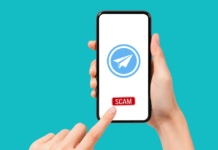In the industry, ongoing advancements in medical services and healthcare have always been a popular topic. The medical professionals work hard to change the healthcare industry as best they can by utilizing cutting-edge technological solutions.
One of these popular substitutes is the Internet of Things, or IoT for short. The world has already been significantly impacted by this cutting-edge technology, and the healthcare sector is no exception.
IoT use in healthcare is growing at a never-before-seen pace. According to numerous reports, the healthcare industry’s IoT revenue was $74.31 billion in 2024 and is projected to grow to $135.87 billion by 2025.
IoT applications in healthcare are always growing, ranging from improved medical inspection to virtual healthcare aid. However, what is the long-term effectiveness of these IoT solutions?
IoT in Healthcare: Where Does It Stand?
Patients and medical professionals can now receive medical information via electronic media thanks to the development of telemedicine. Particularly during the COVID-19 epidemic, when contactless visits were not only required but also crucial from a health standpoint, it proved advantageous.
But telemedicine’s use of IoT has advanced this procedure well beyond contactless consultations. By facilitating virtual connections between patients and caregivers, it transformed the healthcare sector. The size of the global IoT market in the healthcare sector is now estimated at $74.3 billion, and it is expected to grow at a compound annual growth rate (CAGR) of 22.28% over the next several years.
In addition to virtual meetings, hospitals and other healthcare facilities have also adopted Internet of Medical Things (IoMT) equipment to obtain real-time medical information without physically seeing the patients.
Benefits of IoT in Healthcare: How Is It Changing the Game?
In addition to providing consumers with easy access to medical services, IoT technology in healthcare can lower the cost and improve the efficiency of associated operations. These are a few advantages that the Internet of Medical Things offers.
Real-time Reporting and Monitoring
Giving medical professionals real-time updates on their patients’ health is one of the most important advantages of utilizing IoT in healthcare. Continuous reporting and monitoring can help people avoid or at least get ready for major illnesses like hypertension, asthma attacks, cardiac arrests, etc.
When a patient’s health is exceedingly serious and every second matters, this can be incredibly helpful. IoMT devices, for example, can be used to collect real-time reports of patients in intensive care units or those placed under particular observation.
End-to-end Connectivity
IoT applications in healthcare can provide a smooth connection and data-sharing process by integrating the newest technology and media. These technologies can improve end-to-end connectivity between patients and physicians by utilizing Wi-Fi, Bluetooth, and artificial intelligence. As a result, it is easier and takes less time to track and diagnose health issues.
For improved coordination and simultaneous reporting, for example, you can use IoT to connect various smart devices and medical equipment in a healthcare institution.
Well-organized Data Assortment and Analysis
Maintaining and evaluating a massive amount of patient data is one of the most difficult aspects of in-person medical appointments and treatments. Digital data structuring is possible, but it can be laborious to analyze every single element.
Through the usage of a cloud foundation, IoT devices used in healthcare may systematically track, gather, analyze, and share data. Blockchain technology has the potential to improve the accessibility, efficiency, and transparency of this data transfer procedure in the healthcare industry.
General Body Check-up on the Go
Through the mobile applications connected to wearable IoT devices, patients can quickly get in touch with their doctors for urgent help. In addition to saving money and time on travel, it will enable patients to promptly obtain precise information about their conditions.
Easy Elderly Assistance
The elderly population is one of the main groups benefiting from IoT in healthcare. Even though technology has made people’s lives easier, many elderly individuals are still hesitant to use sophisticated devices. They favor traditional healthcare methods over contemporary ones.
But given their age and health, it becomes crucial to keep an eye on them, particularly if they are afflicted with serious illnesses. Taking them to the hospital frequently can be problematic for their health and well-being under such circumstances.
Caregivers can receive timely wellbeing updates if they are outfitted with intelligent IoT healthcare devices. Actually, they can also remind patients of their diet and prescriptions. Additionally, these gadgets can alert caregivers in the event of an emergency. In summary, IoT remote patient monitoring makes it simple and convenient for elderly people to receive much-needed care.
Lowering Waiting Time
Reducing waiting times and improving patient satisfaction are two important criteria in the healthcare sector, and effective IoT implementation in healthcare can significantly impact these areas.
For example, by adding IoT-enabled patient check-in capabilities to their systems, healthcare facilities can expedite the registration process. Additionally, by employing IoT-connected devices to track the real-time locations of patients and medical personnel, the patient flow can be optimized.
The Real-life Applications of IoT in Healthcare
Given how quickly IoT technology is developing in the medical field, it is reasonable to assume that the future of IoT in healthcare is bright. An overview of some actual IoT applications in healthcare will be given in the section that follows.
Smart Thermometers
Regularly taking a patient’s body temperature is essential for spotting the early symptoms of disease. By sending, storing, and evaluating temperature measurements, smart thermometers enable medical professionals to receive real-time information and improve patient care.
Additionally, by linking these smart thermometers to blood pressure and heart rate monitors, you may obtain a more complete picture of a patient’s health.
Hearables
The way individuals with hearing loss interact has been totally transformed by the creation of IoT-based wearable technology. Bluetooth technology is used to link and synchronize these smart wearables with smartphones.
These devices filter sound waves as they go through them, use intelligent equalizers to alter them, and provide hearing-impaired users with a personalized, real-world sound experience.
Smart Insulin Pens
Another way that science and technology have benefitted customers is through smart insulin pens. These are remote-access internet-based diabetes monitoring and treatment tools. By connecting these injector pens to an Internet of Things-integrated software, diabetics may easily control the way their insulin is delivered.
These intelligent insulin pens track dosages, measure blood sugar, and alert users when their next dose is due. Additionally, customers can receive comprehensive reports about their diabetes levels and configure personalized alerts.
Smart Pills
One of the best ways to track and evaluate a patient’s entire body’s functioning is with these edible IoT pills. Additionally, these medications might alert carers to any abnormalities.
These pills function simply: after being swallowed by the patient, they pass through the digestive system and send all of the patient’s bodily information to a receiver (a smartphone).
What’s the Future Scope of IoT in Healthcare?
Without a doubt, the Internet of Things has had a major impact on the healthcare industry. The delivery of medical services has been totally transformed by the development of connected inhalers, remote heart rate monitoring, breathing analysis, smart insulin delivery, depression and mood monitoring, and numerous more IoT applications.
Healthcare organizations have been motivated to incorporate IoT into their commercial operation models by the continuous trends in this field. IoT-based solutions are already included in the infrastructure of over 60% of healthcare companies. It demonstrates that businesses and healthcare organizations are searching for better ways to address the problems they encountered with manual record processing and management systems.
Eighty percent of clinics favor electronic health records over paper records, according to another study. Manual record-keeping procedures are being replaced by these sophisticated systems, which assist hospitals in more effectively managing, storing, and analyzing patient findings.






